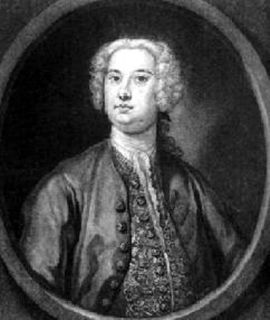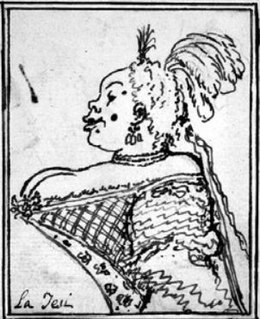
Pietro Antonio Domenico Trapassi, better known by his pseudonym of Pietro Metastasio, was an Italian poet and librettist, considered the most important writer of opera seria libretti.

Johann Adolph Hasse was an 18th-century German composer, singer and teacher of music. Immensely popular in his time, Hasse was best known for his prolific operatic output, though he also composed a considerable quantity of sacred music. Married to soprano Faustina Bordoni and a friend of librettist Pietro Metastasio, whose libretti he frequently set, Hasse was a pivotal figure in the development of opera seria and 18th-century music.

Niccolò Jommelli was an Italian composer of the Neapolitan School. Along with other composers mainly in the Holy Roman Empire and France, he was responsible for certain operatic reforms including reducing ornateness of style and the primacy of star singers somewhat.

Carl Heinrich Graun was a German composer and tenor. Along with Johann Adolph Hasse, he is considered to be the most important German composer of Italian opera of his time.

Davide Perez was an Italian opera composer born in Naples of Italian parents, and later resident court composer at Lisbon from 1752. He staged three operas on librettos of Metastasio at Lisbon with huge success in 1753, 1754, and 1755. Following the 1755 Lisbon earthquake, Perez turned from opera mostly to church music.

Giovanni Carestini was an Italian castrato of the 18th century, who sang in the operas and oratorios of George Frideric Handel. He is also remembered as having sung for Johann Adolph Hasse and Christoph Willibald Gluck.

Artaserse is the name of a number of Italian operas, all based on a text by Metastasio. Artaserse is the Italian form of the name of the king Artaxerxes I of Persia.

Vittoria TesiTramontini, also known as "La Fiorentina" or "La Moretta" was an Italian opera singer of the 18th century. Her vocal range was that of a contralto. She is "regarded as the first eminent singer of black African descent in the history of Western music".

Domènec Terradellas was a Spanish opera composer. The birthdate is sometimes incorrectly given as 1711. Carreras i Bulbena did extensive research in contemporary documents, such as baptismal records, and found that the correct date was 1713. All his works are thoroughly Italian in style.

"Conservati fedele" is a concert aria for soprano and orchestra by Wolfgang Amadeus Mozart.

Catone in Utica is an opera libretto by Metastasio, that was originally written for Leonardo Vinci's 1727 opera. Following Vinci's success, Metastasio's text was used by numerous composers of the baroque and classical eras for their own operas, including Pietro Torri (1736), Antonio Vivaldi (1737), Giovanni Battista Ferrandini (1753) and J. C. Bach (1761).
Andrea Adolfati was an Italian composer who is particularly remembered for his output of opera serias. His works are generally conventional and stylistically similar to the operas of his teacher Baldassare Galuppi. Although his music largely followed the fashion of his time, he did compose two tunes with unusual time signatures for his day: an air in 5
4 meter and another in 7
4 meter.

L'Ipermestra is an 18th-century Italian opera in 3 acts by the Czech composer Josef Mysliveček composed to the libretto Ipermestra by the Italian poet Metastasio first set by Hasse in 1744. This opera belong to the serious type in Italian language referred to as opera seria.
Semiramide riconosciuta is an opera libretto by Pietro Metastasio (1698–1782), written in 1729. It is for opera seria, and accordingly consists of recitatives and da capo arias. It tells a story of the legendary Semiramis, wife of the Biblical Nimrod.

Giovanni Ambrogio Migliavacca was an Italian poet and librettist. A student and protégé of Metastasio, he was primarily active in the court theaters of Dresden and Vienna. His most successful work was the libretto for the opera Solimano, first set by Johann Adolph Hasse in 1753 and subsequently set by 18 other composers in the course of the next 50 years.
Leucippo, favola pastorale in 3 acts, is an Italian-language opera by Johann Adolf Hasse to a libretto by Giovanni Claudio Pasquini premiered at the Hubertusburg in 1747 and revived at Carnival 1751–52.
Ipermestra is an opera libretto by Pietro Metastasio first set by Johann Adolph Hasse 8 January 1744, and in the November of the same year by Christoff Willibald Gluck.













